The ark, Infinity Horizon, is home to many diverse ecosystems accommodating various alien life, some of which can reach truly gargantuan proportions.
The Tytge Sea Leviathans
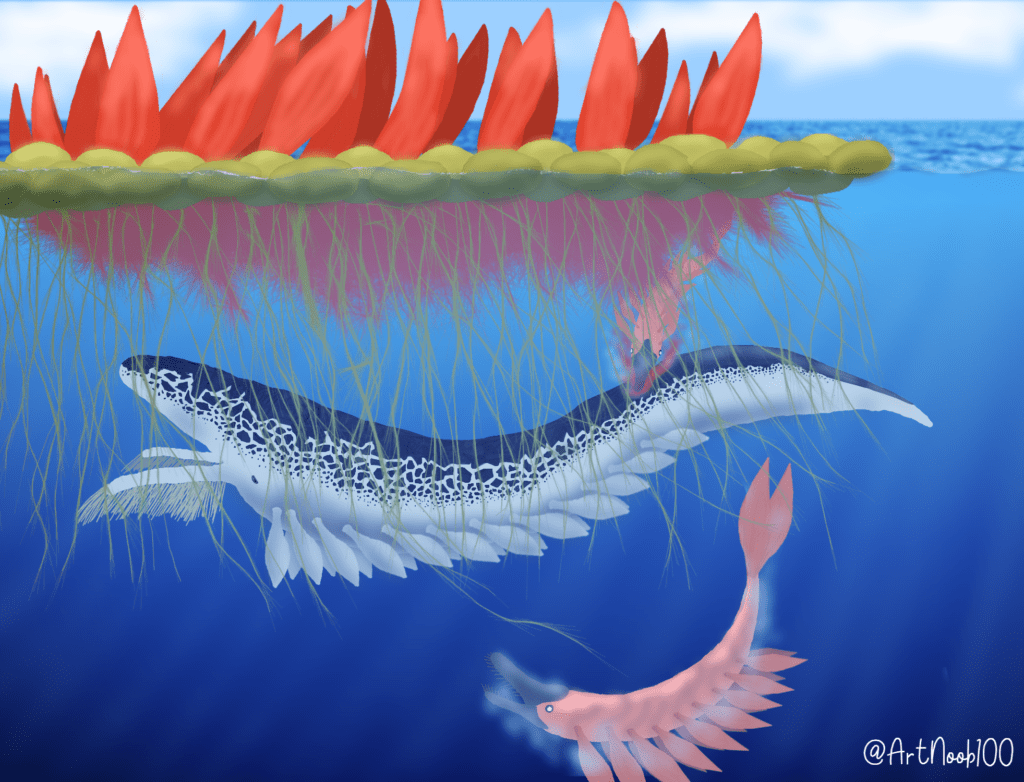
The Tytge Sea is a relatively shallow, cold water ecosystem, allowing it to be rich in plankton and by extension sustaining massive filter feeders. Pictured here are two 80 ft sea stalkers hunting a 300 ft Emperor Obeleen. The gentle giant having gotten stuck in the tendrils of a Great Sea Drifter, which can grow up to a mile long.
Entry by Artnoob100.
Moryana Leviathan
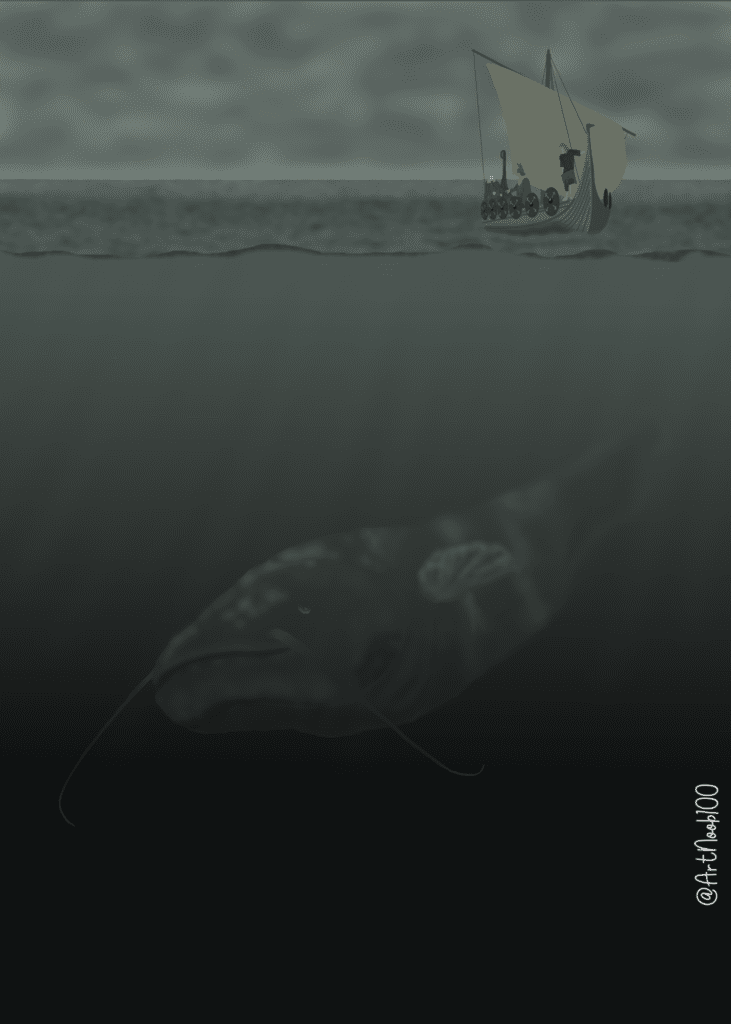
Wels catfish are terrifying. They will attack everything without the slightest hesitation that they can subdue. On Earth, they can reportedly grow up to 15 feet but, in theory, they can get much, much larger as they never stop growing. They only die from a lack of food or from being unable to evade predators.
With an overabundance of food and lack of predators, the accidental introduction of the Wels catfish into the massive inland ocean [Moryana] of Infinity Horizon allowed it to grow to unprecedented sizes. Over eons, selective pressure from female preference and territorial fighting led to further gigantism within the species. These hungry leviathans now lurk beneath the water’s surface, ever on the lookout for their next victim.
Entry by Artnoob100.
Bone Leviathan
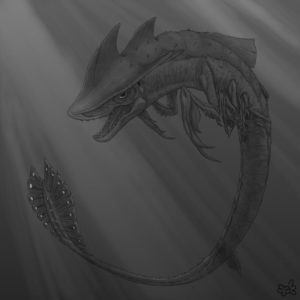
Those seamen brave enough to venture out into deeper waters of Moryana have to be wary of even more terrifying monsters lurking in its depths. None, however, inspires more dread than the Bone Leviathan. A creature of immense size [and appetite], the Bone Leviathan is a creature of the depths, having two massive eyes to scan for prey in the darkness. Males also sport bioluminescent dots on their tales which they use to attract mates and in intricate courtship displays.
They can take down prey bigger than themselves, using their three pairs of appendages to latch on their unfortunate victim, after which they proceed to gorge on their flesh with their oversized mouth filled with incisor-like teeth. Bone Leviathans are highly territorial and aggressive; they will try to attack anything they come across, including members of their own species.
It is this set of behaviors that makes them particularly dangerous to ships. During night storms, Bone Leviathans are attracted to the surface by the commotion and they will often attack passing ships, breaking into the hull and compromising it with their powerful bites. With thick bony plates surrounding their entire body, they can be difficult, if not impossible, to dislodge with conventional weaponry, even of those relatively more advanced cultures. Many a great ship has been lost over countless millennia from Bone Leviathan attacks.
Entry by CrisPing.
Great Maw Snapper
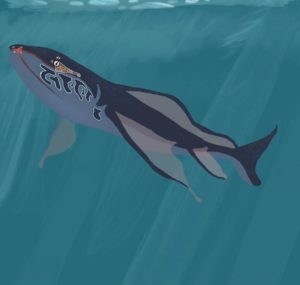
The vast ocean of Leviathan’s Reach is home to a diverse array of fauna, some of which can reach massive sizes. Even the relatively ‘safer’ coastal waters can harbor true monsters dreaded by even the most experienced of sailors. Among these include the Great Maw Snapper. Reaching an adult length of nearly 47 ft (14.3 m), they are near the top of their ecosystem’s food chain.
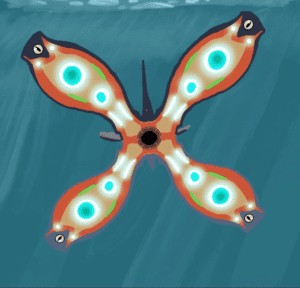
Their name stems from their unique feeding method. At night, they remain motionless with their jaws open for a period of two to six hours. The prey are drawn to them by the pheromones they emit and the bioluminescent patches on the inside of their mouths. Once enough creatures gather, the mouth smashes shut and swallows everything at once.
The species is known to feature a degree of sexual dimorphism with males tending to be smaller (growing only up to 33 ft or 10 m) and boasting more vivid coloration. The males fertilize the eggs that the females have laid on their backs in the spring and then quickly pass away. While females survive 60–80 years, males only live for 15 years. Studies have concluded their intelligence to be on the same level as that of a human toddler.
Entry by Sanana.